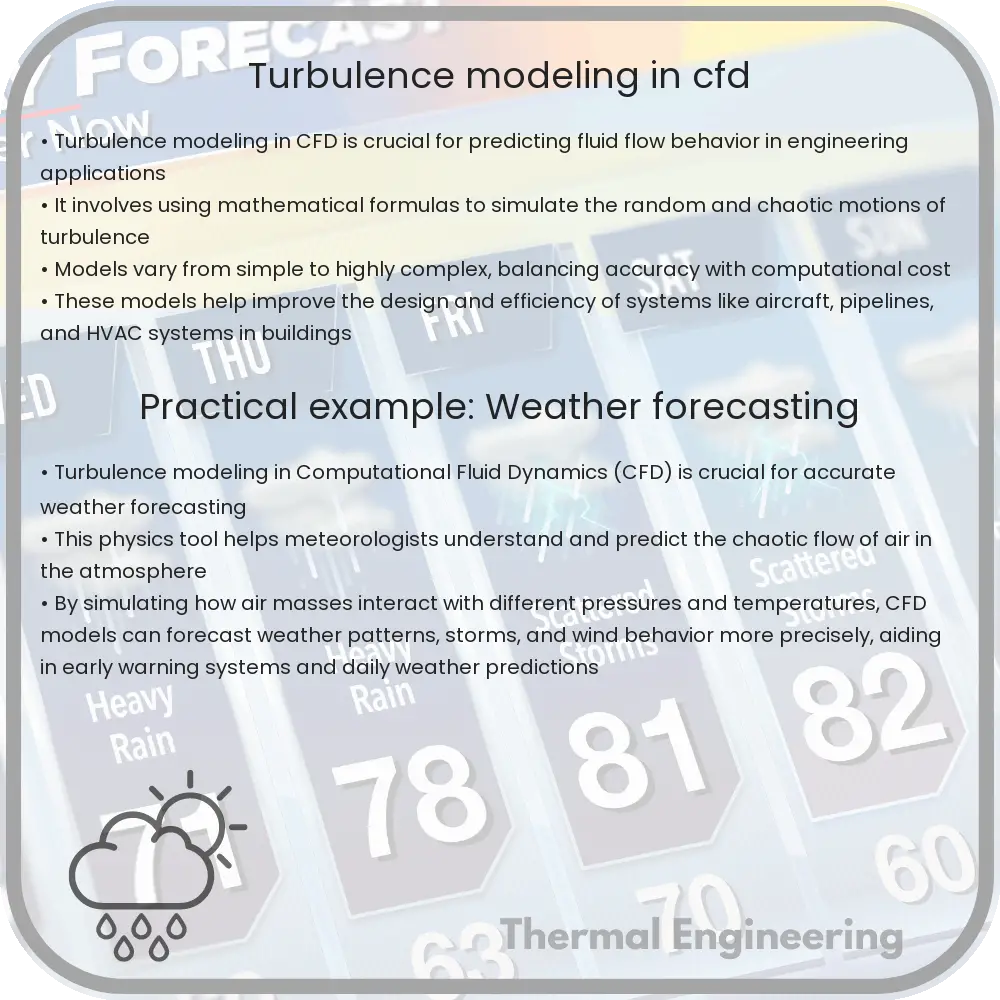Explore the complexities of turbulence modeling within Computational Fluid Dynamics to predict fluid behavior in engineering designs.

Understanding Turbulence Modeling in Computational Fluid Dynamics
Computational Fluid Dynamics (CFD) is a branch of fluid mechanics that uses numerical methods and algorithms to solve and analyze problems involving fluid flows. One of the most challenging aspects of CFD is the accurate modeling of turbulence, a complex, chaotic flow phenomenon that greatly impacts engineering processes.
What is Turbulence?
Turbulence is characterized by erratic fluctuations and mixing, differing significantly from smooth (laminar) flow. It plays a crucial role in various applications, influencing everything from aerodynamic drag on vehicles to the rate of chemical reactions in industrial processes.
Why Model Turbulence?
In engineering, predicting the effects of turbulent flows can be essential for the design of equipment in numerous fields, including aerospace, automotive, and energy generation. Turbulence modeling allows engineers to simulate and study the performance of designs under realistic, often extreme conditions without resorting to costly and time-consuming experiments.
Types of Turbulence Models
Turbulence models vary greatly in complexity and fidelity. Different models are used depending on the trade-off between computational cost and the level of accuracy required. Below are the primary types of turbulence models used in CFD:
- Reynolds-Averaged Navier-Stokes (RANS) Models: These models, including Spalart-Allmaras, k-ε (k-epsilon), and k-ω (k-omega), use ensemble-averaged equations to represent turbulent flows. RANS models are typically less computationally intensive but might not capture flow details with high accuracy.
- Large Eddy Simulation (LES) Models: LES resolves large-scale eddies while modeling smaller scales. This type of modeling provides more accuracy than RANS in capturing the transient and dynamic features of turbulence but requires greater computational resources.
- Direct Numerical Simulation (DNS): DNS resolves all scales of turbulence and provides a highly detailed and accurate numerical solution. However, it is only practical for very simple geometries or low Reynolds number flows due to its intense computational demands.
Common Challenges in Turbulence Modeling
Turbulence modeling in CFD is not without its challenges. These include:
- Computational Expense: Higher fidelity models like DNS and LES are computationally expensive and often impractical for routine design and analysis.
- Model Reliability: There can be significant uncertainties in turbulence model predictions, especially for complex flows involving separation, strong curvatures, and anisotropy.
- Parameter Sensitivity: The accuracy of RANS models often depends heavily on correct calibration of empirical coefficients, which can vary with flow conditions.
Future Directions in Turbulence Modeling
Advances in computing power, along with innovative algorithms and hybrid modeling approaches, are helping to address some of the traditional challenges faced in turbulence modeling. For example, machine learning techniques are increasingly being integrated to improve the accuracy and efficiency of turbulence models.
Progress in GPU technology and parallel computing also promises to make high-fidelity models like DNS and LES more accessible, paving the way for their use in solving more complex and realistic problems in engineering.
Understanding and accurately predicting the effects of turbulent flows remain a critical part of designing modern engineering systems. Through ongoing research and developments in computational techniques, turbulence modeling continues to evolve, offering better tools and insights for engineers worldwide.